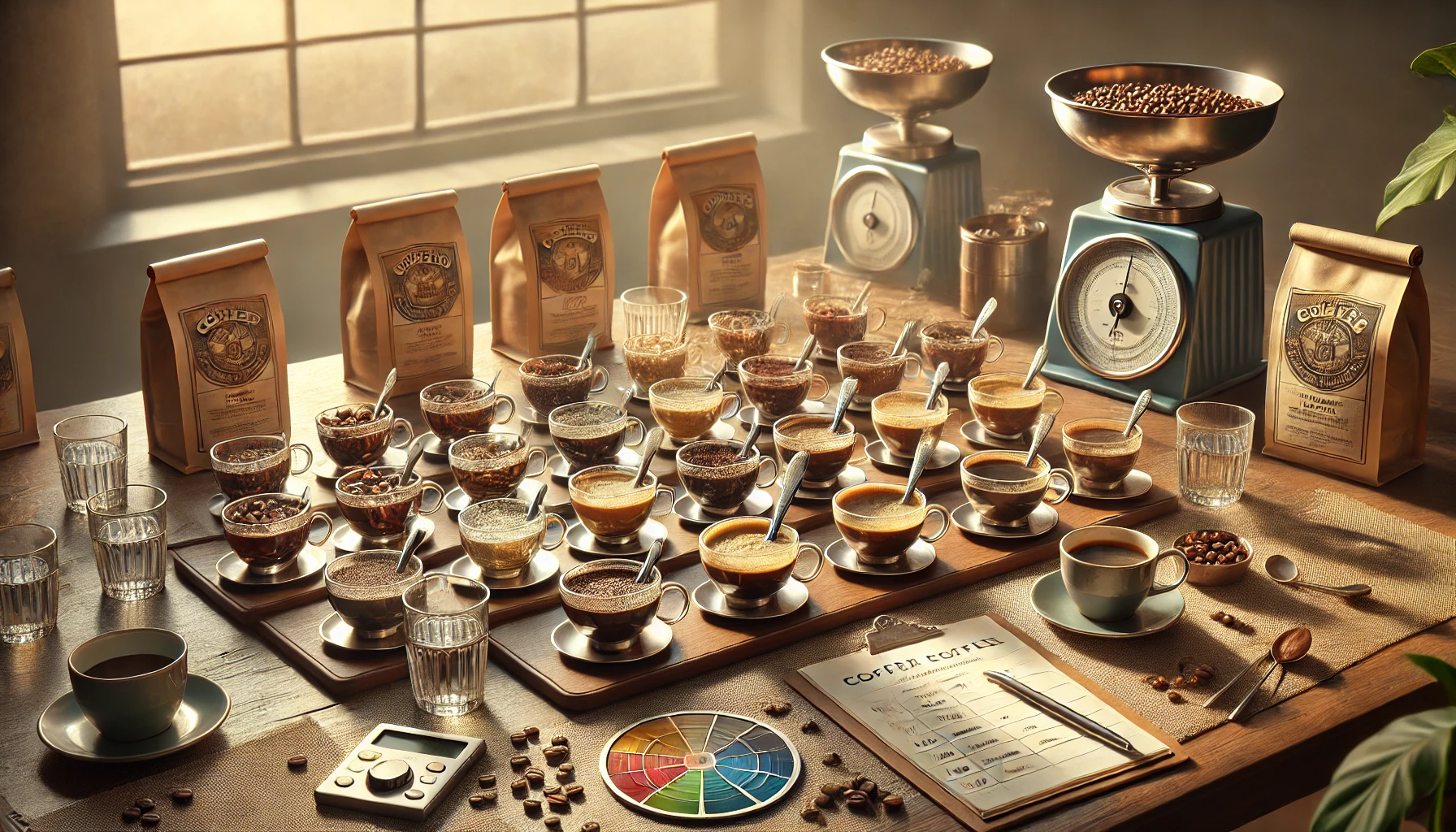Tasting coffee goes far beyond “good” or “bad.” Just like wine or chocolate, coffee offers a world of aromas, flavors, textures, and aftertastes—and learning how to identify them can deepen your appreciation for every cup.
That’s where coffee cupping comes in. It’s the standardized method that professionals use to evaluate beans, and it’s also a fun, approachable way for beginners to explore flavor complexity at home.
In this guide, you’ll learn what cupping is, how to do it, and how to train your palate to taste coffee like a pro.
What Is Coffee Cupping?
Coffee cupping is the industry-standard method for evaluating a coffee’s quality and characteristics. Roasters, baristas, and buyers use it to:
- Compare beans from different regions or processes
- Detect defects or inconsistencies
- Develop flavor notes and roast profiles
- Make purchasing and blending decisions
But it’s also a great way for home brewers and coffee lovers to experience their favorite beans in a deeper, more mindful way.
What You’ll Need
Cupping is simple and doesn’t require fancy gear. You’ll need:
- Freshly roasted whole coffee beans (try 2–4 different types)
- Grinder (burr grinder preferred)
- Cupping bowls or any small wide-mouth cups (150–200ml)
- Cupping spoons (or deep-bowled soup spoons)
- Hot water (~96°C / 205°F)
- Scale (for accuracy)
- Timer
- Notebook or cupping form
- Optional: aroma wheel or flavor chart
It’s also helpful to have clean water for rinsing spoons and a quiet space with minimal distractions.
Standard Cupping Ratio
The general guideline is:
- 8.25g of coffee per 150ml of water
- Medium-coarse grind (slightly finer than French press)
Prepare one bowl per coffee, plus an extra if you want to cup each coffee twice for consistency.
Step-by-Step: How to Cup Coffee at Home
1. Grind and Smell the Dry Grounds
- Grind each coffee and place it in a labeled bowl.
- Smell the dry aroma by gently swirling the grounds.
- Write down your first impressions: floral, nutty, spicy, etc.
2. Add Hot Water
- Start your timer as you pour hot water over the grounds.
- Pour up to the rim and don’t stir yet.
- Let it steep for 4 minutes.
A crust of coffee grounds will form on top—this is normal and essential to the process.
3. Break the Crust and Smell Again
- At 4 minutes, use a spoon to gently break the crust by pushing it back three times.
- Lean in and inhale deeply—this is the wet aroma phase, rich with volatile compounds.
- Rinse your spoon after each cup to avoid cross-contamination.
4. Skim the Surface
- Remove the floating grounds using two spoons.
- Let the coffee cool for a couple more minutes.
5. Taste the Coffee
- Slurp a spoonful of coffee with force—this sprays it across your tongue and enhances flavor detection.
- Let it coat your mouth, then note what you taste.
Repeat the process as the coffee cools—flavors change dramatically between hot, warm, and cool stages.
What to Look (and Taste) For
Use the SCA cupping framework or a simple set of categories:
- Aroma: What do you smell dry and wet?
- Acidity: Brightness or sharpness (citrus, apple, etc.)
- Body: Mouthfeel—thin, creamy, syrupy, oily?
- Flavor: What specific notes do you detect? (fruity, nutty, chocolate, floral, etc.)
- Sweetness: Is it naturally sweet or bitter?
- Aftertaste: What lingers after swallowing?
- Balance: Do the elements work together?
Don’t worry about being “right.” Tasting is subjective, and your descriptors might differ from someone else’s. The goal is awareness and consistency.
Cupping Etiquette and Tips
- Avoid perfumes, flavored lip balms, or strong smells
- Taste in a quiet, focused environment
- Use consistent measurements and grind sizes
- Cup multiple coffees side by side for comparison
- Keep notes and track your flavor memory over time
Over time, you’ll start to recognize processing methods, roast styles, and origin characteristics—a skill that transforms how you brew and buy coffee.
Try These Flavor Descriptors
| Category | Common Notes |
|---|---|
| Fruity | Blueberry, citrus, apple, raisin |
| Floral | Jasmine, rose, chamomile |
| Nutty | Almond, hazelnut, peanut |
| Sweet | Caramel, honey, molasses |
| Spicy | Cinnamon, clove, black pepper |
| Earthy | Tobacco, mushroom, leather |
| Chocolate | Cocoa, dark chocolate, fudge |
| Acidic | Lemon, green apple, red berries |
Use a flavor wheel or coffee taster’s chart to expand your vocabulary.
Final Thoughts: Taste with Intention
Cupping is more than a technique—it’s a chance to slow down, tune in, and explore. It helps you connect more deeply with the story behind the bean: the farm, the process, the roast, and your own palate.
Whether you’re a barista, a home brewer, or just a curious coffee lover, learning to taste coffee like a pro is one of the most rewarding steps in your journey.
So grab a spoon, grind some beans, and discover a world of flavor waiting in your cup.
